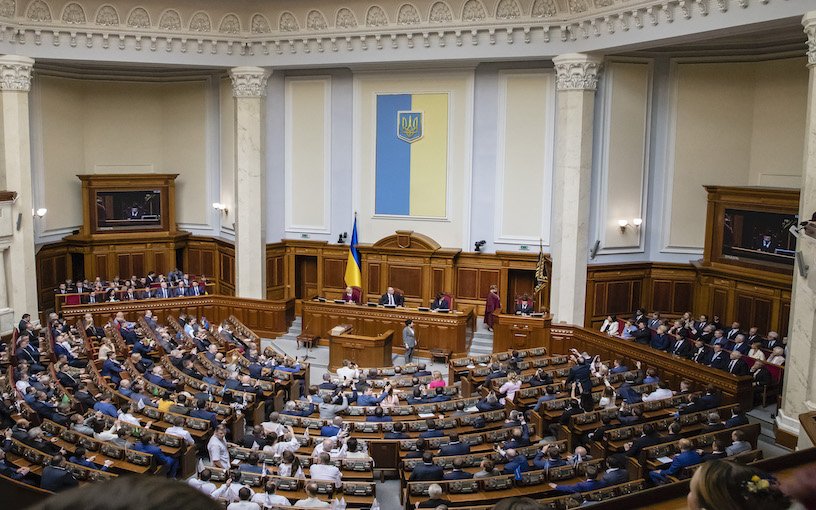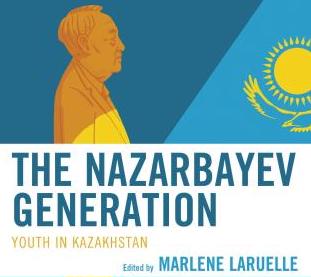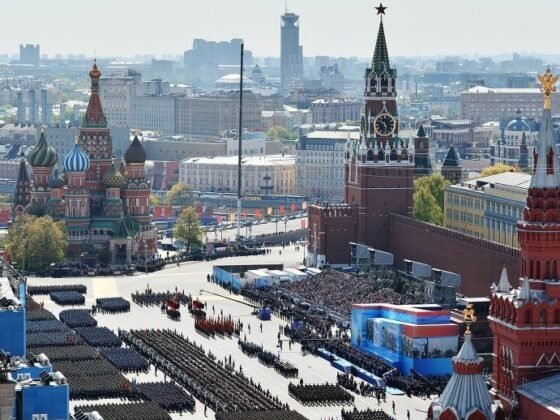Understanding Electoral Reform in Ukraine: How to Open Party Lists While Keeping Them Closed?
Nazar Boyko
January 13, 2020
On December 19th, 2019, Ukraine’s Verkhovna Rada adopted the long-expected Electoral Code, with 330 out of 423 MPs voting positively. Shortly after, it was signed by the president. On January 1, 2020, it took effect.
The key feature of the Code is a substantive change of electoral rules for parliamentary elections: the mixed-member majoritarian (MMM) system was substituted with a variation of open-list proportional representation (OLPR). Over the last three election campaigns since 2012, half of Ukrainian MPs were elected in the single-seat districts by plurality vote. The other half received mandates via closed party lists. In the next elections, candidates will seek mandates in multi-seat regional districts, and voters will be able to cast their ballots for both the party and specific candidates from the list.
Context
For years, open lists have been considered the most desirable alternative to the mixed-member electoral system. In 2014, then-presidential candidate Petro Poroshenko revealed his support for OLPR. After the 2014 snap parliamentary elections, the newly formed coalition in Verkhovna Rada included the introduction of OLPR into its Coalition Agreement.
However, it soon turned out that political parties had very different understandings of what OLPR should look like. As a result, during 2014 and 2015, five draft laws were registered in Parliament. Some of them promoted open lists, while others advocated closed-list proportional representation. At the end of 2017, with the minimal level of support required, the Rada voted in favor of the draft with OLPR in the first of three required readings. Following this, the draft was bombarded with more than 4,000 amendments.
Meanwhile, proponents of the change ran an active public campaign in favor of OLPR. Accordingly, public support for open lists increased from 34.5% in 2017 to more than 41% in 2018. Ten days before the 2019 snap Parliamentary elections, the Rada voted for the Electoral Code introducing OLPR. The Code should take effect in 2023.
This swan song of the previous Parliament, however, was late to meet the upcoming political reality, in which Volodymyr Zelensky became the President of Ukraine and his Servant of the People party got the majority of seats in the newly elected Rada.
Zelensky vetoed the Electoral Code and proposed his own amendments. In regard to the OLPR for the parliamentary elections, the president disparaged it as an “actual preservation of a component that is typical for a closed-list proportional representation system.” Despite the presidential criticism, the final model of OLPR implemented in the new draft of the Code turned out to have even more closed-list features than the previous one. Nevertheless, it was supported by the overwhelming majority of MPs from all parliamentary groups and factions. Volodymyr Zelensky signed the law on December 28th, 2019.
Open Lists by Zelensky
The newly adopted electoral system introduces regional multi-member districts, proportional distribution of seats among political parties that pass a 5% threshold, and a ballot structure with the option of casting votes for specific candidates from a party list. A closer look at the components of the electoral model and the way these components are put together allows better understanding of the incentives provided by the system to parties, candidates, and voters.
Nomination and District Magnitude
Political parties hold an exclusive right to nominate candidates. Each party that stands in elections nominates two types of lists – one national list, and twenty-seven regional lists. The former must not exceed 450 candidates, the size of the Ukrainian legislature. The latter is filled with the candidates from the national list and ranges from a minimum of five to a maximum of seventeen candidates per district. Each candidate from the national list, besides the top nine, must belong to one of the regional lists. Parties determine the ordering of the nominees in both national and regional lists.
The peculiarity of the system is that the magnitudes of the regional districts are unfixed. In other words, there is no predetermined number of MPs that should be elected within each district. Regional turnout is a factor that will directly influence the number of MPs elected in a regional district – the higher the turnout, the larger the number of mandates in the region.
In most cases, the borders of the regional districts coincide with the borders of administrative-territorial units, oblasts. The only exceptions are Kyiv city and Dnipropetrovsk oblast, which are split into two regional districts each, as well as the Southern district that consists of the Kherson oblast, the Autonomous Republic of Crimea, and the city of Sevastopol.
Ballot Design
The voting ballot will be sizable and informative. It will include the numbers and titles of political parties, the names of the top nine candidates from all national party lists, and the names of all regional district candidates nominated by each party.
Empty spaces for voting marks will follow the title of each party. At the very bottom of the ballot, there will be additional space for voters to write down the numbers of preferred candidates from the regional party lists. So, the voter has two basic options. She could either vote for the party, or she could reveal her personal preference for a specific candidate. For the ballot to be considered valid, it is enough to vote just for the party.
Based on the number of candidates in the previous parliamentary elections, it is reasonable to estimate that the voting ballot may consist of between three hundred candidate names at a minimum and almost six hundred names at maximum. This could confuse voters and cause information-processing challenges while completing the ballot. Also, it may complicate the counting process and cause it to last much longer.
Establishment of Results
Parties that pass a 5% electoral threshold qualify for a proportional share of the seats. The Hare quota is used to determine the total number of mandates for each political party. For this reason, the sum of votes for all parties that passed the threshold is divided by four hundred fifty (the total number of seats in Rada).
A second Hare quota is counted to establish the “price” of one mandate in votes. In this case, the sum of parties’ votes is divided by the total number of seats (450) minus the guaranteed top nine seats for each party. For example, if six parties are elected, then the denominator in the formula will be three hundred ninety-six (450-6*9=396).
This quota is used to establish the number of mandates for each party in each regional district. Therefore, the total number of party votes in a regional district is divided into the quota. The full number of the quotient is an amount of mandates for the regional party list.
Fractional remainders are converted back to the votes that are summed for each party from all the regional districts. This sum is divided by the second quota. The resulting number is the amount of mandates distributed via the national party list.
Seat Allocation
The mandates are allocated at two levels – regional and national. To get a seat in the regional district, a candidate from the party list must receive a number of personal votes no less than 25% of the second quota. These candidates are ranked by the percentage of personal votes they received. The rest of the candidates who did not reach the quota are ranked by their order in the national party list.
This mechanism could substantively impact seat allocation. Imagine the following situation. There are two candidates in the regional party list, whose numbers of personal votes are equal to 24% and 0.1% of quota. Neither of them got a direct mandate in the regional district. However, if the latter is placed higher in the national list than the former and there is still a vacant mandate in the district, it would be the second candidate who gets it.
Another portion of the seats is allocated at the national level. These seats derive from the above-mentioned fractional remainders and they go to the candidates from the national lists based on their initial ranking. Practically, these are “third chance” mandates. If the candidate did not get the mandate in the regional district by sufficient personal support or because of her position in the national list, she could still get representation via the national list. What she needs is just to be placed high enough on the list.
Overall, the personal vote is not the only determinant of candidates’ post-election ranking and, consequently, chances to get the mandates. The adopted system reserves a solid set of instruments for political parties that could be used to shape the final pool of elected MPs.
Are Lists Really Open?
The debate over OLPR in Ukraine did not recognize the existing variety of its shades. In short, open-list PR was promoted as an alternative to the existing “corrupt system” inherited from the Yanukovych regime. It was a smart lobbying and advocacy strategy employed by the proponents of open lists. Nevertheless, oversimplification risked giving numerous false promises, especially once the abstract idea was materialized in a specific set of electoral rules.
Formally, the lists are open, as they offer citizens an option of voting for the specific candidates from the party lists. And formally, voters can influence the order of the candidates predetermined by the party. Yet there is still a question of how these formal provisions will be fulfilled in the practice.
On one hand, guaranteed mandates for the top nine positions in the national list, 25%-of-quota thresholds for candidates in regional districts, and fractional remainders in regional districts that are redistributed in favor of candidates in the national lists all position parties to substantially decrease the uncertainty of which candidates in the lists will get the seats. It may be assumed that getting a higher position on the national list would be a more promising strategy for candidates than counting on personal campaigning in hopes of attracting enough personal votes.
On the other hand, ballot design, with its information overload and “hidden” personal vote option on the bottom of the ballot, discourages voters from revealing their personal preferences. In short, simply marking the preferred party requires much less effort than looking for and marking the preferred candidate. The fewer the voters who reveal their personal vote, the more seats allocated in a way determined by the political parties.
Considering everything mentioned above, the Ukrainian electoral system should be described in terms of flexible rather than open party lists, where both “party-provided rank order and preference votes are taken into account in the allocation of candidates.”
What to Expect Next?
This was the first time in Ukraine that electoral reform was adopted more than four years before the next regular elections (assuming that there will be no snap parliamentary campaign). It reserves enough time for the actors – parties, candidates, and voters – to familiarize themselves with the new rules and to shape their election and voting strategies far before the start of the game.
Meanwhile, it is reasonable to expect that some effects of the new electoral system will emerge before the elections. In the first place, it will affect the behavior of current MPs. Seeking reelection, they will need to assure a slot in the party national list as now it is the only entrance to the Parliament. They have two major options on the table in this regard. An MP can either increase and demonstrate loyalty to the party she is affiliated with, or she can break away from the current party to start or participate in a new project. Therefore, it may result in two opposite tendencies in the Parliament: first, grouping of loyalists around their parties and strengthening of party discipline, and second, party splits with further formation of new parliamentary groups.
Nazar Boyko is a Doctoral Candidate at West Virginia University, a co-founder of the CIFRA Monitoring-Analytics Group (a Ukraine-based nongovernmental organization founded in 2009), and a Fulbright alumnus (2008-2009).
Homepage image credit.











